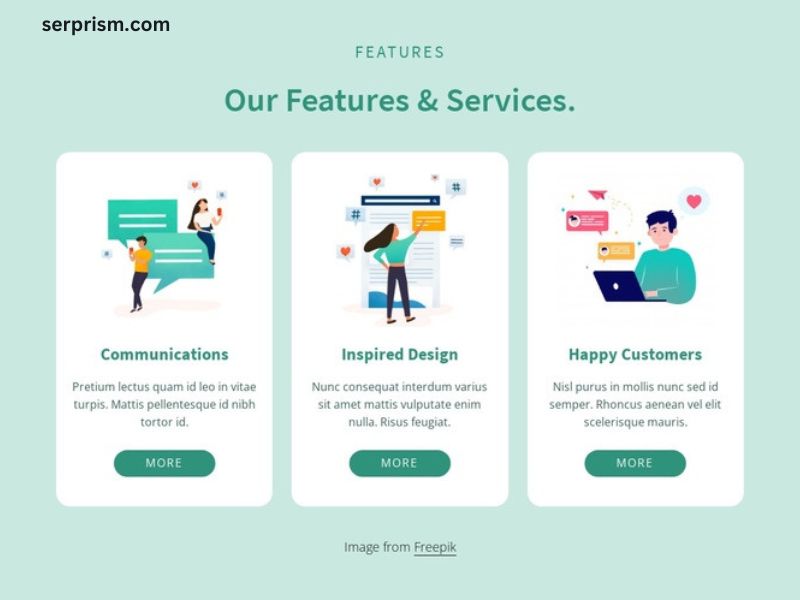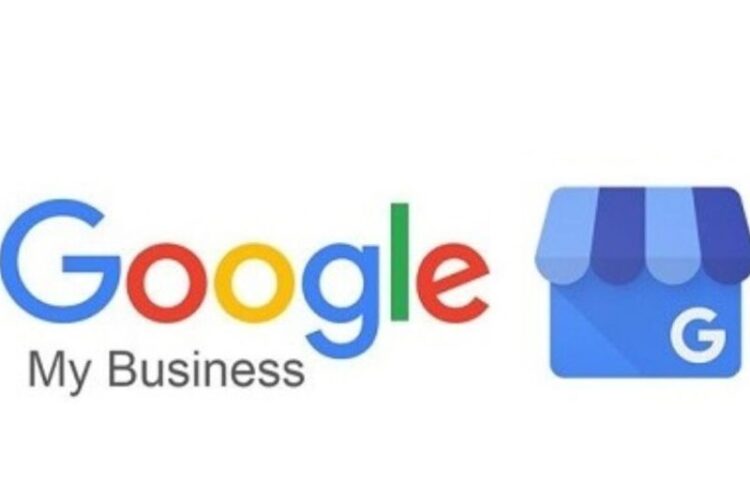
Your website’s service page is a crucial component that showcases your business offerings and helps potential customers understand the value you provide. This page serves as a dedicated space to highlight your services, their features, and the benefits they offer to your target audience. Crafting an effective service page can significantly impact your website’s overall performance, conversion rates, and customer engagement.
Importance of a Well-Designed Service Page
A well-designed service page can be the difference between a visitor becoming a paying customer or leaving your website altogether. This page acts as a virtual storefront, allowing you to showcase your expertise, build trust, and guide visitors towards taking desired actions, such as making a purchase or booking an appointment. By carefully curating the content and layout of your service page, you can effectively communicate your unique value proposition and differentiate your business from competitors.
Essential Elements for a Service Page
To create a compelling service page, consider incorporating the following key elements:
- Clear and Concise Service Descriptions:
- Provide a clear and concise overview of each service you offer.
- Highlight the key features and benefits of your services, addressing your customers’ pain points and needs.
- Use simple, easy-to-understand language and avoid industry jargon that may confuse your audience.
- Visuals and Multimedia:
- Incorporate high-quality images, videos, or graphics to visually showcase your services and their benefits.
- Use visuals to complement your written content and help visitors better understand your offerings.
- Ensure that your visuals are optimized for fast loading times and mobile responsiveness.
- Testimonials and Reviews:
- Include positive testimonials or reviews from your satisfied customers to build credibility and social proof.
- Showcase how your services have helped your clients achieve their desired outcomes.
- Consider incorporating customer photos or videos to add authenticity to the testimonials.
- Call-to-Action Buttons and Contact Information:
- Strategically place clear and compelling call-to-action (CTA) buttons throughout your service page.
- Encourage visitors to take the next step, such as requesting a quote, booking an appointment, or contacting your business.
- Provide easily accessible contact information, including your phone number, email address, and any other relevant contact details.
- Optimizing for Search Engine Optimization (SEO):
- Conduct keyword research to identify the terms and phrases your target audience is searching for.
- Incorporate these keywords naturally throughout your service page content, including the page title, headings, and descriptions.
- Optimize your page’s metadata, such as the title tag and meta description, to improve visibility in search engine results.
- Mobile-Friendly Design:
- Ensure that your service page is responsive and optimized for seamless viewing on various mobile devices.
- Consider the user experience on smaller screens and adjust the layout, content, and call-to-action placement accordingly.
- Test your service page on different mobile devices to ensure a consistent and user-friendly experience.
Clear and Concise Service Descriptions
The foundation of your service page is the clear and concise descriptions of your offerings. Begin by clearly outlining each service you provide, using simple and easy-to-understand language. Avoid industry jargon or technical terms that may confuse your audience. Instead, focus on highlighting the key features and benefits of your services, addressing your customers’ pain points and needs.
When crafting your service descriptions, consider the following tips:
- Start with a compelling and attention-grabbing headline for each service.
- Provide a brief overview that summarizes the essence of the service.
- Outline the specific features and capabilities of the service.
- Emphasize the tangible benefits your customers will receive from using the service.
- Use bullet points or numbered lists to make the information easy to scan and digest.
- Include relevant keywords throughout the descriptions to improve SEO.
By delivering clear and concise service descriptions, you can effectively communicate the value of your offerings and guide your visitors towards taking the desired actions.
Visuals and Multimedia for Service Pages
Complementing your written content with visuals and multimedia can significantly enhance the overall user experience on your service page. Incorporate high-quality images, videos, or graphics that visually showcase your services and their benefits. These visual elements can help visitors better understand your offerings and make a stronger emotional connection with your brand.
When selecting and incorporating visuals, keep the following in mind:
- Choose visuals that are relevant, informative, and visually appealing.
- Ensure that the images and videos are of high quality and optimized for fast loading times.
- Align the visuals with the corresponding service descriptions to create a cohesive and engaging experience.
- Use captions, annotations, or short descriptions to provide context and further explain the visuals.
- Consider using before-and-after images or videos to demonstrate the impact of your services.
- Optimize the visuals for mobile responsiveness to ensure a seamless viewing experience across devices.
By strategically using visuals and multimedia, you can effectively communicate the features and benefits of your services, making it easier for visitors to understand and appreciate the value you offer.
Testimonials and Reviews for Credibility
Showcasing positive testimonials and reviews from your satisfied customers can be a powerful way to build credibility and trust with your website visitors. Authentic customer feedback can serve as social proof, demonstrating the real-world impact of your services and reassuring potential customers that your business delivers on its promises.
When incorporating testimonials and reviews on your service page, consider the following best practices:
- Collect and curate a diverse range of testimonials that highlight different aspects of your services.
- Use full names, job titles, or company affiliations to add credibility to the testimonials.
- Include customer photos or videos to make the testimonials more personal and engaging.
- Organize the testimonials in a visually appealing way, such as using a carousel or grid layout.
- Encourage your customers to leave reviews on third-party platforms, and then selectively feature the most impactful ones on your service page.
- Regularly update your testimonials and reviews to showcase your ongoing commitment to customer satisfaction.
By prominently featuring these social proof elements, you can effectively address any doubts or concerns visitors may have about your services, ultimately increasing their confidence in your business and driving them towards taking the desired actions.
Call-to-Action Buttons and Contact Information
To guide your visitors towards the next step in their journey, it’s crucial to strategically place clear and compelling call-to-action (CTA) buttons throughout your service page. These CTAs should encourage visitors to take the desired action, such as requesting a quote, booking an appointment, or contacting your business.
When crafting your CTA buttons, consider the following best practices:
- Use clear and action-oriented language, such as “Get a Quote,” “Book Now,” or “Contact Us.”
- Ensure that the CTA buttons are visually prominent and easy to locate on the page.
- Experiment with different button sizes, colors, and placements to optimize their effectiveness.
- Provide multiple CTA buttons at various points throughout the service page to give visitors multiple opportunities to convert.
- Incorporate relevant keywords into the CTA text to improve their relevance and visibility.
- Make the CTA buttons easily accessible, especially on mobile devices, to facilitate a seamless user experience.
In addition to the CTA buttons, be sure to prominently display your contact information, including your phone number, email address, and any other relevant contact details. This makes it easy for visitors to reach out to your business and take the next steps in their customer journey.
Ready to create an effective service page for your website? Contact our team of digital marketing experts today to get started!
Optimizing Service Page for SEO
To ensure your service page is easily discoverable by your target audience, it’s essential to optimize it for search engine optimization (SEO). By incorporating relevant keywords and implementing best practices, you can improve the visibility of your service page in search engine results and attract more qualified leads to your website.
When optimizing your service page for SEO, consider the following strategies:
- Keyword Research:
- Conduct thorough keyword research to identify the terms and phrases your target audience is searching for.
- Incorporate these keywords naturally throughout your service page content, including the page title, headings, and descriptions.
- Use a mix of broad, informational keywords and more specific, transactional keywords to cater to different stages of the customer journey.
- Metadata Optimization:
- Optimize your page’s metadata, such as the title tag and meta description, to improve its visibility in search engine results.
- Craft compelling and informative title tags and meta descriptions that accurately reflect the content of your service page.
- Ensure that your metadata includes relevant keywords to enhance the page’s relevance and click-through rates.
- Content Structure and Organization:
- Organize your service page content in a logical and easy-to-navigate structure, using clear headings and subheadings.
- Break up your content into digestible sections, making it easier for both users and search engines to understand the page’s structure.
- Incorporate internal links to other relevant pages on your website, improving the overall site architecture and user experience.
- Technical Optimization:
- Ensure that your service page loads quickly and is mobile-friendly, as these factors are important for both user experience and SEO.
- Optimize the page’s images, videos, and other media by compressing file sizes and using appropriate file formats.
- Implement schema markup or structured data to provide search engines with additional context about the content on your service page.
By focusing on these SEO best practices, you can increase the visibility and discoverability of your service page, attracting more qualified traffic and potential customers to your website.
Mobile-Friendly Service Page Design
In today’s digital landscape, where mobile devices have become the primary means of accessing online content, it’s crucial to ensure that your service page is optimized for seamless viewing and interaction on mobile devices. A mobile-friendly service page not only enhances the user experience but also contributes to improved search engine rankings and higher conversion rates.
When designing your mobile-friendly service page, consider the following best practices:
- Responsive Layout:
- Ensure that your service page’s layout and design are responsive, adapting to the various screen sizes and resolutions of mobile devices.
- Optimize the content, images, and other elements to ensure they are easy to read, navigate, and interact with on smaller screens.
- Content Prioritization:
- Identify the most critical information and features on your service page and prioritize their placement for mobile users.
- Condense or reorganize content to make it more concise and scannable on mobile devices.
- Ensure that important calls-to-action and contact information are easily accessible and prominently displayed.
- Intuitive Navigation:
- Design a user-friendly navigation menu that is easy to access and navigate on mobile devices.
- Minimize the number of taps or swipes required for users to find the information they need.
- Optimize the size and placement of interactive elements, such as buttons and links, to ensure they are easily clickable on mobile screens.
- Mobile-Specific Optimizations:
- Leverage mobile-specific features and functionalities, such as click-to-call buttons, location-based services, or mobile-friendly forms.
- Ensure that any videos or multimedia content on your service page are optimized for mobile playback.
- Consider implementing accelerated mobile pages (AMP) or other mobile-friendly technologies to improve page load times.
- Testing and Monitoring:
- Regularly test your service page on a variety of mobile devices and browsers to identify and address any issues or inconsistencies.
- Monitor your website’s analytics to understand the mobile user behavior and make data-driven decisions to enhance the mobile experience.
By prioritizing mobile-friendly design and optimization, you can provide your visitors with a seamless and engaging experience on your service page, ultimately driving higher conversions and customer satisfaction.
Conclusion
Your service page is a critical component of your website, serving as a virtual showcase for your business offerings and their unique value proposition. By incorporating the essential elements discussed in this article, you can create a compelling and effective service page that attracts, informs, and converts your target audience.
Remember to focus on clear and concise service descriptions, visually engaging content, social proof, strategic call-to-action buttons, SEO optimization, and a mobile-friendly design. By carefully crafting each aspect of your service page, you can effectively communicate the benefits of your services, build trust with your visitors, and guide them towards taking the desired actions.
Continuously monitor and optimize your service page based on user behavior, feedback, and industry best practices. This will ensure that your service page remains relevant, engaging, and effective in driving business growth and customer loyalty.



